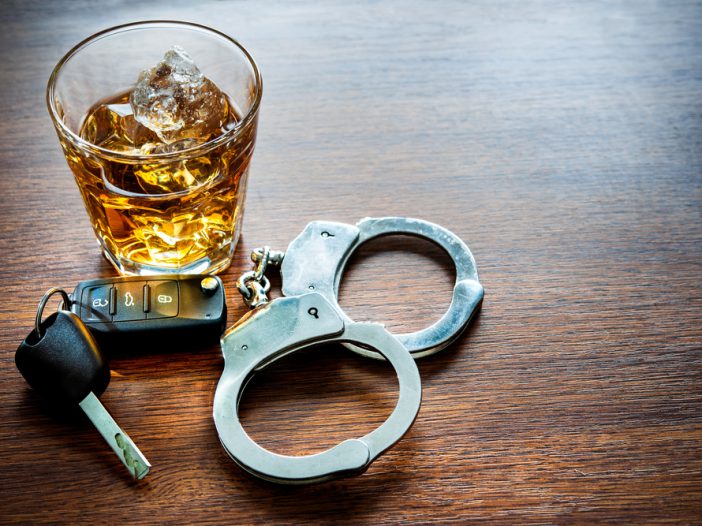
In nearly every state, a motorist found guilty of a DUI will be mandated to install and upkeep an interlock device in their vehicle. Since most drivers who operate their vehicles under the influence do so dozens of times before being caught, these devices have become incredibly important tools in the fight against drunk driving recidivism. Below, we will discuss the details of what ignition interlock devices are and how they operate.
What is an Ignition Interlock Device?
The earliest concepts of ignition interlock devices have been around since the early 20th century. Modern versions are an amalgamation of two separate technologies:
- A breathalyzer – A device that measures the blood alcohol concentration in a person’s alveoli breath to gauge how inebriated they are.
- An immobilizer – An electronic security device attached to the vehicle’s engine, which prevents it from turning over and working unless the proper signal is given.
Compared to the early versions, modern ignition interlock devices are incredibly accurate and have played a substantial role in preventing further drunk driving occurrences. Because of its success at cutting down rates of drunk driving, in many states, an interlock device is legally mandatory for those found guilty of Driving Under the Influence. Some other states do not require it unless you are a repeat offender.
If you were ordered to have an interlock device fitted in your car, you will need to take the following steps:
- Purchase the device through a state licensed interlock provider.
- Have the equipment installed by a certified technician who will fit the interlock between the car’s ignition and electrical system.
You are legally required to bring that device in for calibration servicing every 60 days. At these appointments, the following will occur:
- The device will be tested and re-calibrated for accuracy.
- The action log will be downloaded and scrutinized for any warnings or violations.
- Any improper actions taken by the driver will be reported to the proper authorities.
How an Ignition Interlock Device Works
LCI’s contemporary interlock device is connected to your engine’s ignition system and is made up of two essential parts:
- Handset – The part you must blow into in order to provide a breath sample.
- Relay Module – The breath sample passes into the module, which then instantly processes the BAC. If the BAC is beneath the required threshold (.03 BAC or less) it will allow the ignitor to turn over and the engine to run.
There are two primary methods of use for an ignition interlock device, the initial breath test and the rolling retest.
The Initial Breath Test
With LCI, the initial test is relatively straight forward. You simply enter your vehicle, take the handset, and blow out for 3 consecutive seconds. There is no blowing, humming, inhaling, or other complicated blowing patterns. Once the device has a sufficient sample, it will alert you that you can stop blowing. In the space of a few heartbeats, it will take the sample, analyze it, and then provide your results. If it measures too large an alcohol sample, you will receive a warning, the car will not turn on, and you will have to provide an additional sample a few minutes later.
Multiple warnings or violations may result in a total service lockout, which would require LCI to come unlock it for it to work once more. Attempting to drive the vehicle with a BAC of .08 or higher will be logged as a failure and lead to lockouts, fines, penalties, suspensions, or extensions.
Rolling Retests
All ignition interlock providers are required to program their devices to require a rolling retest 5 to 10 minutes after the first test. This was done to thwart drivers from circumventing the device by using a sober person to provide the breath sample. So, when the retest signal comes on, the driver is required to once more give a breath sample within a few minutes.
If the sample surpasses the threshold or if no sample is received, the device will log the failure and then make the vehicle’s lights and alarm go haywire in an attempt to alert the authorities. The engine will not suddenly cut off, seeing as that would be very dangerous. However, the lights and horns will continue to flash until you pull over, stop the vehicle, and then give a safe sample.
Why You Should Consider Low Cost Interlock
If you have made the mistake of driving under the influence, you will have to find a provider that works with you. Low Cost Interlock is licensed in more than half the states in the country and the LCI interlock device is discreet, accurate, and incredibly easy to use. With 24/7 bilingual customer support, there is always a friendly expert willing and waiting to speak to you about any questions or needs you might have!
Sources
Doyle, K. Business Insider. Ignition Lock Laws are Reducing the Rate of Drunk-Driving Deaths. (2016). https://www.businessinsider.com/r-ignition-lock-laws-cut-alcohol-related-crash-deaths-2016-3
Mother’s Against Drunk Driving. Ignition Interlock FAQ’s. https://web.archive.org/web/20160402060249/http://www.madd.org/drunk-driving/ignition-interlocks/interlockfaq.html
Cordell, L. Slate. Baby, You Can’t Drive Your Car – A judge’s favorite punishment for drunken drivers—ignition-interlock. (2009). https://slate.com/news-and-politics/2009/09/ignition-interlock-devices-are-the-best-punishment-for-drunken-drivers.html